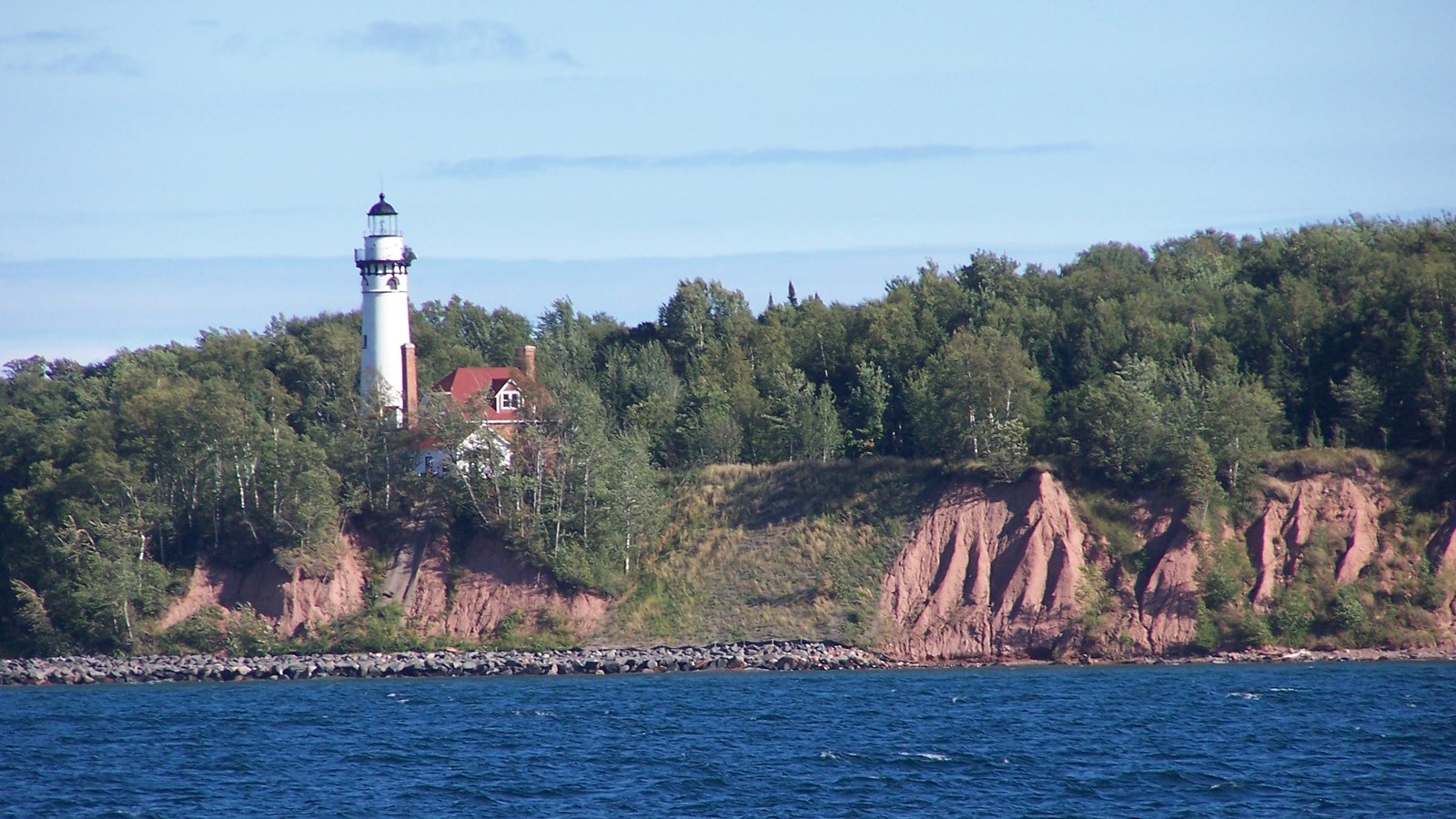Last updated: October 1, 2021
Place
Outer Island

NPS Photo
Beach/Water Access, Canoe/Kayak/Small Boat Launch, Dock/Pier, Historical/Interpretive Information/Exhibits, Toilet - Vault/Composting, Trailhead
Gichi-ishkwaayaan-minis (Outer Island) is located 24 miles from Bayfield. It is the farthest from the mainland and the most remote of the six Apostle Islands light stations. Visiting Outer Island can be a challenge. Only the most experienced private boaters and sea kayakers should consider attempting a trip to this lighthouse, due to the great distance and exposed location. Even when lake conditions permit approach, the exposed location of the dock often makes landing impossible. There is one campsite on the southern sand spit and primitive camping is also available. Hiking is available on the island. There is a 7.5 mile Sandspit Trail that connects the campsite near the sand spit on the south end of the island with the light station on the north end, and a 1.5 mile trail leading the historic Lullabye logging camp.
Outer Island Light Station
The Outer Island light was lit October of 1874 and is known as a “Poe Tower” for a series of lighthouses built in the Great Lakes region during Orlando Poe’s tenure with the Lighthouse Board. He recommended a lighthouse be built on Outer Island to mark the eastern edge of the Apostle Islands. As a member of the Light House Board, General Poe put his labors into helping save lives by directing ship traffic throughout the Great Lakes with his Italianate style influence looking lighthouses. The “Poe style” is known for its brick structures and graceful embellishments with hooded arched windows, support corbels, and curved brackets. People who worked with Poe marveled at the magnitude and intricacy of his work. The Outer Island tower is 90 feet high and was outfitted with the third order Fresnel lens that could be seen 20 miles offshore. It was also the first island station with a fog signal in the Apostle Islands, marking the eastern edge of the archipelago to oncoming traffic. The light became automated in 1961.
Lullabye Logging
In 1936 the Lullabye Furniture Company of Stevens Point, Wisconsin, purchased the entire island outside of the lighthouse reservation. This included eight thousand acres of standing timber mostly yellow birch, hemlock, and cedar. The company was founded in 1897 by John J. Bukolt and gained national distribution of cradles, other children’s furniture, and toys in the 1920’s. Logging on the island began in 1942 when wartime demand created a more favorable market of products such as plywood for the fuselage on bombers. By the 1950’s Lullabye’s Outer Island logging operation was fully mechanized and run by a thirteen-man crew. A bulldozed airstrip on the southwestern portion of the island allowed small planes to land. The airstrip was located several miles from the camp, but several old cars were brought to the island to transport people and goods. Fuel became essential for this type of logging and diesel was brought in on one thousand-gallon tanks.Camp life for Lullabye workers included amenities unknown to earlier generations of woodworkers such as a portable generator which provided electricity for lights and a television.
Over 20 million board feet of timber was harvested over the years. By the 1950’s Lullabye had become one of the largest manufacturers of children’s furniture. Lullabye ended its Outer Island logging operation in 1963, not because the timber was gone, but because it was no longer profitable. Logging operations changed the landscape of the Apostle Islands. Eventually the forests regenerated, but the second and third growth forests are dominated by birch and maple. The regenerated forests support different plant and animal species than were found in the virgin forests. These logging camps remain relatively undisturbed and well preserved as a record of the past.
